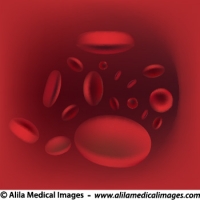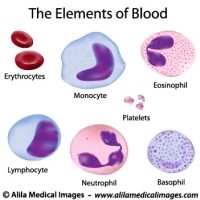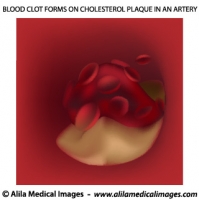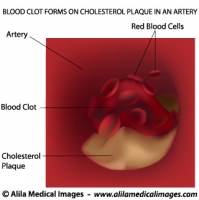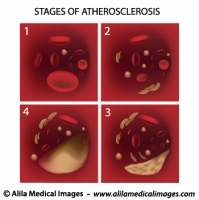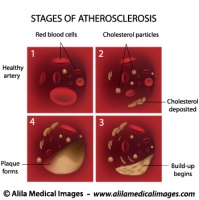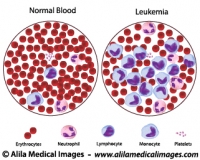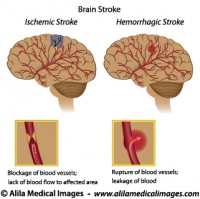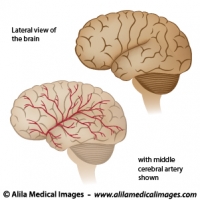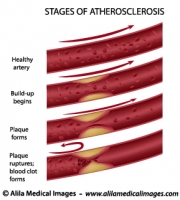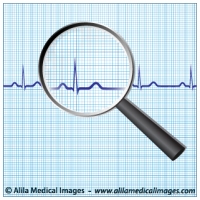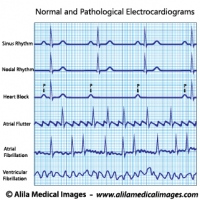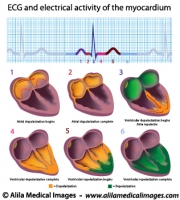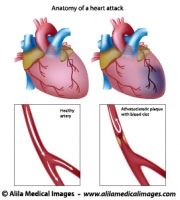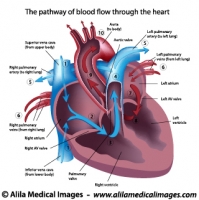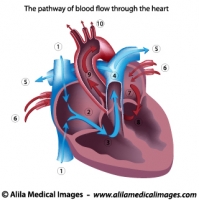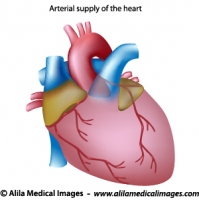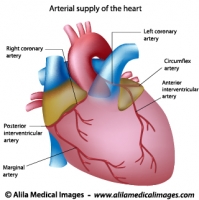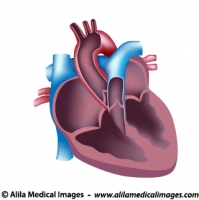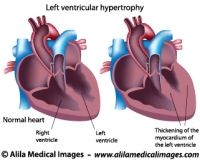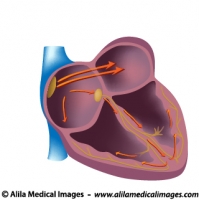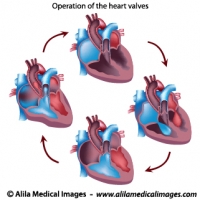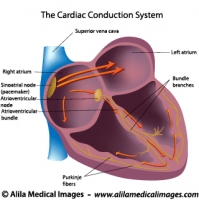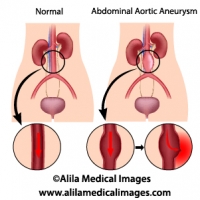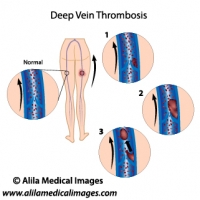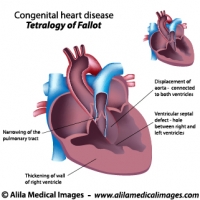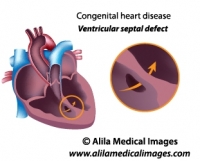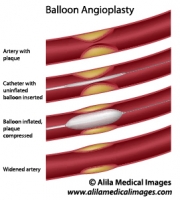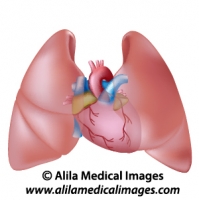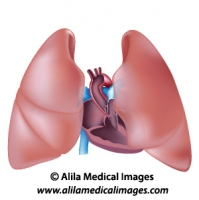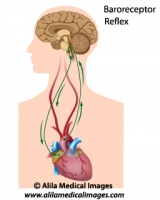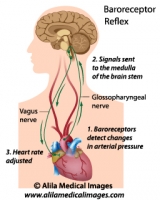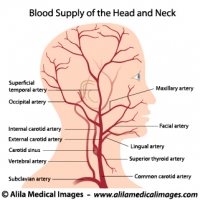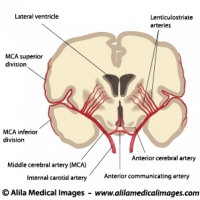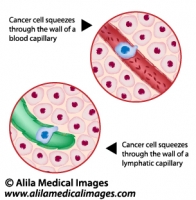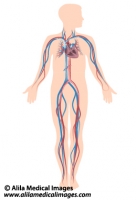The videos on this page are available for licensing here!
Lead 2 is most popular among the 12 leads. This is because the net movement of the heart’s impulses is toward lead II, making it the best general view. Unless otherwise specified, we will be looking at lead 2.
Our analysis will include the following: heart rate, heart rhythm, P wave, PR interval, QRS complex, ST segment.
For heart rate: Identify the QRS complex – usually the biggest on an ECG; count the number of small squares between two consecutive QRS complexes and calculate the heart rate with this formula. If this number is variable, count the number of QRS complexes on a 6 second strip and multiply by 10. A normal heart rate is between 60 and 100 beats per minute. A rate of less than 60 bpm is bradycardia; heart rate of more than 100 bpm is tachycardia.
For rhythm: measure the intervals between the R waves. If these intervals vary by less than 1.5 small squares, the rhythm is regular; if the variation is greater than 1.5 small squares, the rhythm is irregular.
P wave represents depolarization of the atria initiated by the SA node. Presence of a normal P wave therefore indicates sinus rhythm. P waves are most prominent in leads II, III, aVF and V1.
Absence of P waves indicates non-sinus rhythms. Absence of P waves and presence of irregular narrow QRS complexes are the hallmark of atrial fibrillation. The baseline may be undulating or totally flat.
A sawtooth pattern instead of regular P waves signifies atrial flutter. These are called flutter waves. The number of flutter waves preceding a QRS complex corresponds to number of atrial contractions to one ventricular contraction.
P wave is the summation of 2 smaller waves resulting from depolarization of the right atrium followed by that of the left atrium. Normal P waves are rounded, smooth and upright in most leads. In V1, P wave is biphasic, with an initial positive deflection corresponding to activation of the right atrium, and a subsequent negative deflection, resulting from activation of the left atrium.
Unusual morphology of P waves is indicative of atrial enlargement. In right atrial enlargement, depolarization of the right atrium lasts longer than normal and its waveform extends to the end of that of the left atrium. This results in a P wave that is taller than normal, more than 2.5 small squares. Its duration remains unchanged, less than 120ms. In V1, this is seen as a taller initial positive deflection of the P wave, more than 1.5 small squares. Right atrial enlargement is usually due to pulmonary hypertension.
In left atrial enlargement, depolarization of the left atrium lasts longer than normal. This results in a wider P wave, of more than 3 small squares. The waveform may also be notched. In V1 the negative portion of P wave is deeper and wider. Left atrial enlargement is commonly due to mitral stenosis.
P-wave inversion in the inferior leads indicates a non-sinus rhythm. When this happens measure the PR interval. If the PR interval is less than 3 small squares, the rhythm is started in the AV junction – AV nodal junctional rhythm. If the PR interval is more than 3 small squares, the origin of the rhythm is within the atria – ectopic atrial rhythm.
The PR interval is measured from the start of the P wave to the start of the QRS complex and reflects the conduction through the AV node.
A longer than normal PR interval signifies an abnormal delay in the AV node, or an AV block. A consistent long PR interval of more than 5 small squares constitutes first-degree heart block. It might be a sign of hyperkalemia or digoxin toxicity. A progressive prolongation of PR interval followed by a P wave WITHOUT a QRS complex is the hallmark of second-degree AV block type I.
A shorter than normal PR interval, of less than 3 small squares, signifies that the ventricles depolarize too early. There are 2 scenarios for this to happen:
- Pre-excitation syndrome: presence of an accessory pathway bypassing the AV node.
- AV nodal (junctional) rhythm: Non-sinus rhythm initiated from around the AV node area instead of the SA node. In this case, P waves are either absent or inverted in the inferior leads.
The QRS complex represents depolarization of the ventricles. A normal QRS complex is narrow, between 70 and 100 ms. A wider QRS complex, resulting from an abnormally slow ventricular depolarization, may be caused by:
– A ventricular rhythm: rhythms originated from ectopic sites in the ventricles. OR
– An impaired conduction within the ventricles in conditions such as bundle branch block, hyperkalemia or sodium-channel blockade.
A QRS complex wider than three small squares despite sinus rhythm is the hallmark of bundle branch block. When bundle branch block is suspected, check leads V1 and V6 for characteristic patterns of the QRS complex.
The ST segment extends from the end of the S wave to the start of the T wave. A normal ST segment is mostly flat and level with the baseline. Elevation of more than two small squares in the chest leads or one small square in the limb leads, indicates the possibility of myocardial infarction.
Pericarditis causes a characteristic “saddleback” ST segment elevation and PR segment depression in all leads except aVR and V1, where the reverse – ST depression and PR elevation – are seen.












